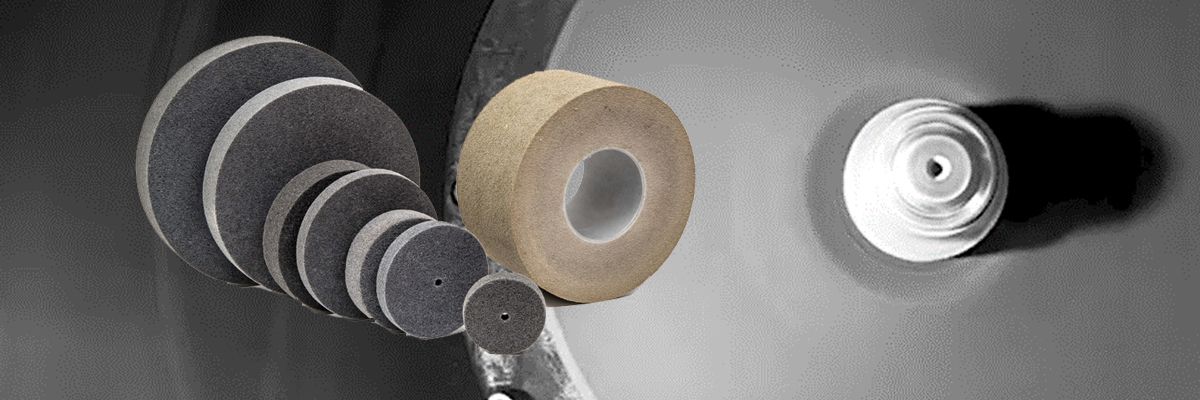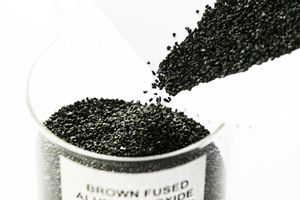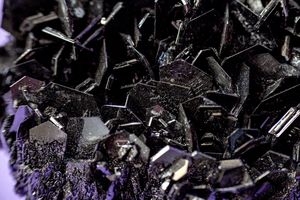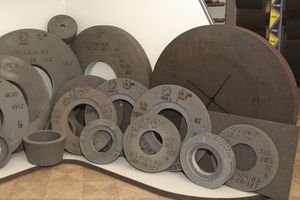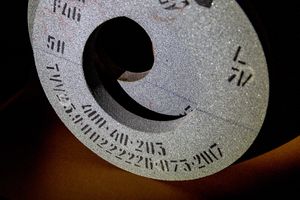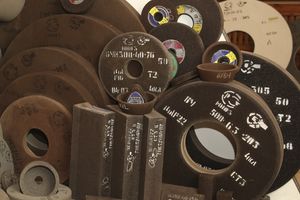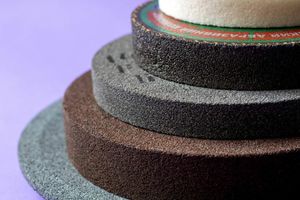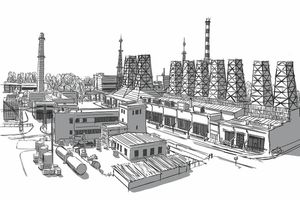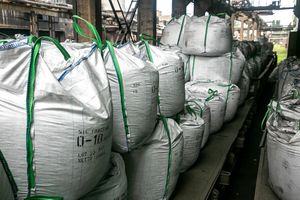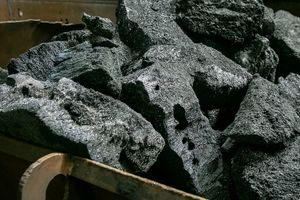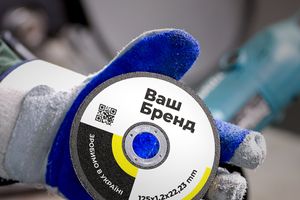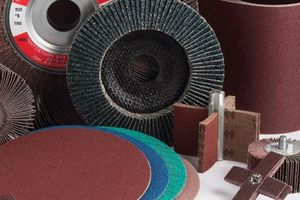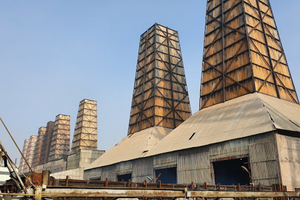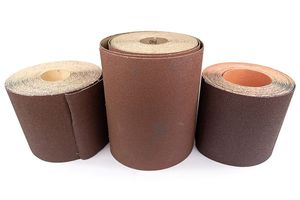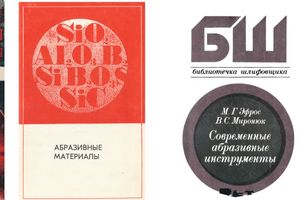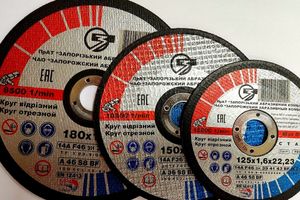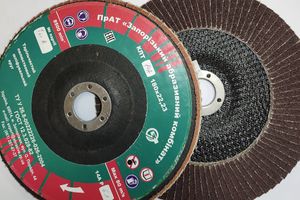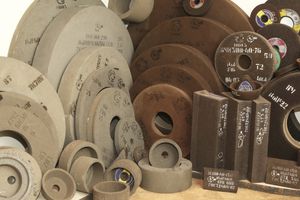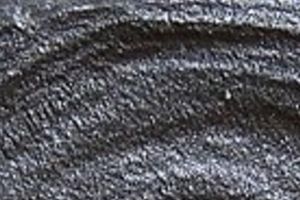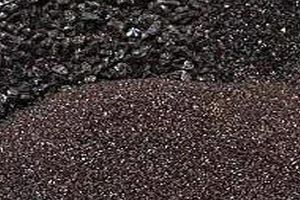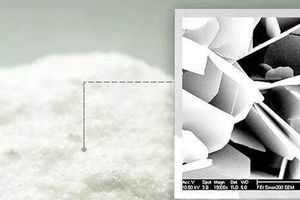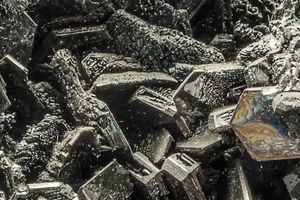The task of the bond is to form and hold the grinding material in the shape of a circle (segment, bar). Any bond is ballast and interferes with the grinding process, since the cutting tool is only abrasive material. But without a binder it is impossible to create an abrasive tool of a fixed geometric shape. The hardness, structure, mechanical strength and other parameters of the abrasive tool depend on the type and amount of bond in the wheel. The bond significantly influences the rate of material removal, the quality of processing, durability and, accordingly, the efficiency of the operation.
There are two main types of ligaments: inorganic and organic:
Inorganic binders: (ceramic and magnesia) have high fire resistance, water resistance, chemical resistance and relatively high operational resistance.
Depending on the chemical composition and refractoriness, ceramic binders are divided into melting (vitreous) and sintering (porcelain-like). Melting binders turn into glass after cooling, sintering binders melt only partially and are close in composition and condition to porcelain. Ceramic binders, most often, are multicomponent mixtures composed in certain proportions from crushed raw materials: refractory clay, flux (feldspar, boron glass), talc and a number of other materials.
The disadvantage of the ceramic bond is its high fragility, as a result of which wheels on this bond cannot be used in operations with shock loads (grinding, cutting and power grinding). The relatively low bending strength does not allow the use of such wheels for cutting work, since they are thin and can collapse under lateral load (bending). Various chemicals and shelf life do not affect the bundle.
Magnesium binders harden without heat and are magnesium cement, the main components of which are magnesium oxide and magnesium chloride. The disadvantages of this ligament include hydrophobic properties and relatively low strength. Magnesium bonded wheels are operated at operating speeds of up to 25 m/s. For storage it is necessary to create special conditions.
Organic binders include: bakelite, vulcanite, glyphthalic, epoxy, polyvinylformal and polyester.
Bakelite bond (designation “B”) – the basis is liquid and powdered phenol-formaldehyde resins with inorganic fillers (cryolite, pyrite, alabaster, etc.). Abrasive tools based on bakelite bonds have high strength, especially compressive and impact strength, surpassing ceramic tools in these indicators. The high strength of the bakelite binder allows the abrasive tool to operate under heavy loads and high cutting speeds (up to 80 m/s and higher when reinforced with fiberglass mesh).
The main application is the production of wheels for grinding and cutting operations, when grinding with heavy loads and metal removal. The disadvantages of this binder include low heat resistance - destruction of the binder occurs at temperatures of 400° - 700°C, insufficient resistance to the effects of alkaline solutions, which limits the use of coolants (the use of solutions containing more than 1.5% alkali is undesirable). The shelf life of abrasive tools with a bakelite bond is limited.
Vulcanite bond (designation "R") is a multi-component composition, the main component is synthetic rubber. As additives: vulcanizing agent - sulfur, vulcanization accelerators (captax, thiuram, etc.), mineral and organic fillers that regulate the physical, mechanical and operational properties of abrasive tools and the molding properties of the mass. Vulcanite bonded tools have elasticity and density, so they can be used for both conventional types of grinding and polishing operations. Vulcanite bonded wheels, unlike other types, can be made very thin (tenths of a millimeter with a diameter of up to 150-200 mm). The disadvantage is the low heat resistance (250°-300°C) and weak consolidation of the grain in the binder, which explains the lower wear resistance of the wheels compared to bakelite and ceramic ones.
Glyphthalic binder is a product of the interaction of glycerin with phthalic anhydride. Low heat resistance (120°C) and low hardness make it possible to use glyphthalic bonded wheels only for polishing operations at a working speed of no higher than 40 m/s.
Polyvinylformal bond - foamed polyvinylformal. Another name for circles based on this bond is porous plastic. Used for polishing and finishing operations.
Epoxy and polyester binders - represent compositions based on epoxy and polyester resins. They are used very limitedly, mainly for the manufacture of stone-processing tools and tumbling bodies.
When choosing a bunch of abrasive tools, proceed from the nature of the operation; operating conditions of the tool and the type of grinding material used.
Ceramic, bakelite and vulcanite binders are most widely used in the manufacture of abrasive tools.
